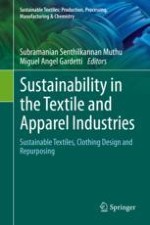2020 | OriginalPaper | Buchkapitel
Bacteria Working to Create Sustainable Textile Materials and Textile Colorants Leading to Sustainable Textile Design
verfasst von : Fatma Filiz Yıldırım, Arzu Yavas, Ozan Avinc
Erschienen in: Sustainability in the Textile and Apparel Industries
Aktivieren Sie unsere intelligente Suche, um passende Fachinhalte oder Patente zu finden.
Wählen Sie Textabschnitte aus um mit Künstlicher Intelligenz passenden Patente zu finden. powered by
Markieren Sie Textabschnitte, um KI-gestützt weitere passende Inhalte zu finden. powered by
